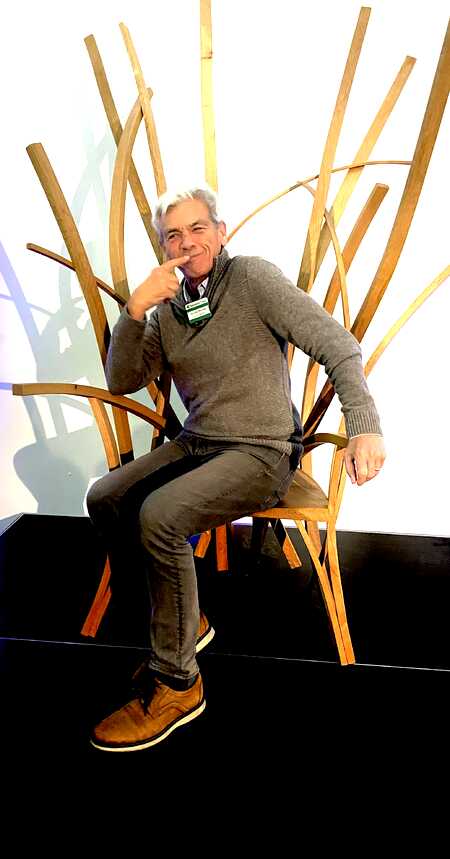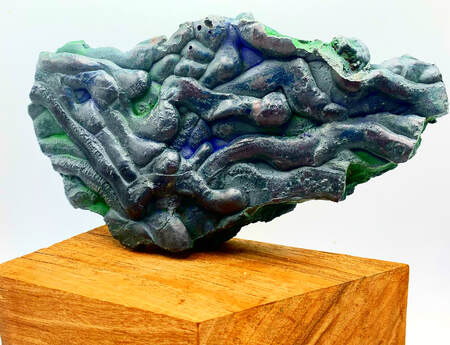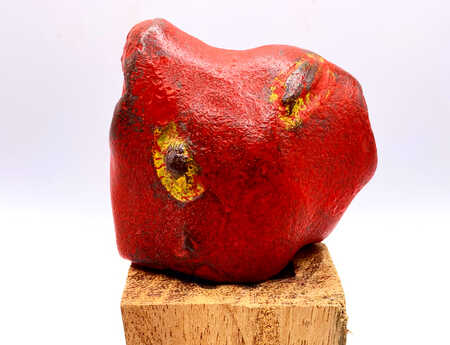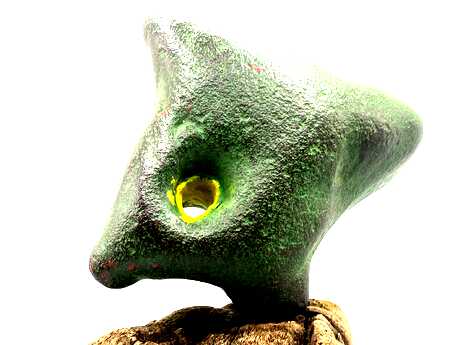
United Kingdom
Art and geology were my two most successful subjects at school. However, I was forced to choose one or the other to go to university. I chose geology. Now, I see time differently. I can read a cliff. A million years in a stone inch. Past times, climate and palaeogeography can be revealed to me in a single pebble.
Since childhood I have collected ‘special’ stones. Only latterly have I discovered that this has been a Buddhist art form in the far east since the time of the Tang dynasty in China called gongshi 供石 (in Korea 수석 suseok and in Japan 水石 suiseki).
Found ‘spirit stones’, were sought that embodied in miniature sacred mountains or the mythic land of the immortals. The spread of Buddhist teachings and Chinese diplomacy to Korea, Japan and Vietnam saw these stones mounted on intricately carved rosewood platforms or supported in sand-filled bronze bowls as gifts of the emperor to the elite. The tradition of such objects has endured through the centuries. The Oscar-winning Korean film ‘Parasite’ has the alleged wealth-bringing power of one such stone at the core of its story and indeed the film’s director, Bong Joon-ho, was taken as a child by his father to hunt for such ‘lucky’ stones.
My art practice of just three years has sought to avoid direct cultural appropriation of these objects by punking up my stones with ready found marine plastic and industrial waste mounting materials. This art is a spoon to stir our collective amnesiac consciousness. It is a prompt for meditative reflection on the disgraceful condition that our plastic-polluted waters have achieved during my lifetime. We are all commoners of the planet’s greatest common, the ocean.
I might walk a strand all day lost in the meditation of searching for a form of natural sculpture until a stone presents itself. There might be a billion pebbles on a beach but maybe only one that I will take home. Nature is my muse and serendipity my watchful guardian.
I will always seek inspiration from combinations of the natural and the un-natural and constantly evolve as new opportunities arise to demonstrate this juncture of artistic and cultural uncertainty. I utilise my knowledge of geology and landscape to seek out wild spaces that embody the most intriguing genius loci. I forage for materials on the beaches of National Parks and AONBs, which despite their designation as being the ‘most beautiful’, suffer the same plastic pollution as the ‘most degraded’ of locations. I theme my work derived from this melding enterprise as ‘Pretty-Dirty Places’. Sometimes I give my stones patina; sometimes beeswax; I plait plastics and seek out weathered wood or boatbuilders’ waste. My discipline is to find an aesthetically pleasing combination of all.
The beach is my studio and when I am there, lost in my meditative quest, time slows and expands my creativity. I like to think, shamanistically, that my stones find me. I hope that they can also, in time, ‘find’ you.



